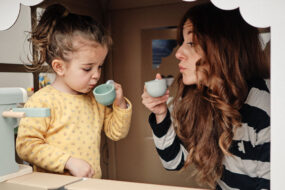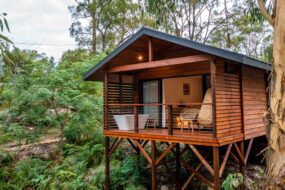Green and easy: A beginner’s guide to composting
Recycling food waste is easier than you think. Composting is a beginner-friendly way to reduce your environmental impact and give your garden a nutritional boost.
When we think of composting, what may come to mind for the uninitiated is a master gardener formulating the perfect concoction to pour over their veggie patch.
But in reality, composting is a lot less intimidating, according to RMIT Environmental Microbiology Professor Andrew Ball.
“It may sound like a complicated process, but it’s quite simple when you’re doing it at home,” Prof Ball says.
“Anything that has organic matter, like leaves or food scraps, decomposes and breaks down into a rich, stable material, which you can then use in your garden.”
Why should we care about our food scraps?
Horticultural professional Sabrina Hahn says that composting is one of the easiest ways to be more sustainable.
“It’s all about not filling up our landfill areas with things that can be recycled,” Sabrina says.
A 2021 study showed that Aussie homes produce almost 2.5 million tonnes of food waste yearly, costing households $2500.
Aside from helping the environment and our wallets, Prof Ball says composting is a great way to get outdoors.
“It’s actually a really fun hobby to have,” he says.
How do I start composting?
Sabrina says to start with your food scraps but to use three times as much brown or “dry” waste to green or “wet” waste.
Green waste includes green leaves, soft prunings, fresh grass clippings, fruit and vegetable scraps, while dry waste can be autumn/dry leaves, straw, hay, shredded paper, twigs/sticks, sawdust or wood shavings, dry soil, egg shells, cardboard or vacuum cleaner dust.
“It gets smelly when that ratio is wrong… so that one to three ratio is vitally important,” she says.
If you’re tight on space, you can use your FOGO bin to sustainably manage your food scraps.
Prof Ball says to think of it like the council is doing your composting for you.
“You can probably be a bit more forgiving of the material you put in,” he says.
“But pretty much think of it as “I’m going to put this in my compost.”
Best ways to use your compost
“You can start using it as a potting soil, put it on the surface of the garden or replace a mulch,” Prof Ball says.
He says there are also renter-friendly possibilities for those without backyard space.
“A wonderful opportunity exists for community action where people living in apartments can come together and set up a communal composting system,” says Prof Ball.
Sabrina says you can also use compost to revitalise your house plants.
Expert tips for managing compost
Do
- Make your compost in one batch using small materials and do it over a six-week period. Don’t add to a batch until it’s done.
- Make sure you turn the compost heap to rotate the minerals.
- Always layer your pile with three times as much brown to green material. “It’s like making a lasagne,” Sabrina says.
Don’t
- Don’t make it too wet. The consistency of a kitchen sponge is best, says Sabrina.
- Don’t use bones, scraps of meat or cooking oils and fats. Prof Ball says this is what attracts pests.
- Don’t use pet waste, charcoal or anything sprayed with pesticides as it’s toxic to your plants and the microorganisms that break down your compost.
- Don’t compost indoors, it can pose a safety hazard to children and pets.
More environmentally friendly tips:
- Eco-friendly: A – Z guide to living more sustainably
- Are bioplastics really better for the environment?
- How eating for the planet could save you $1800 a year
- 5 habits that are good for you and the planet
Written by Ruby Oosthuizen.





